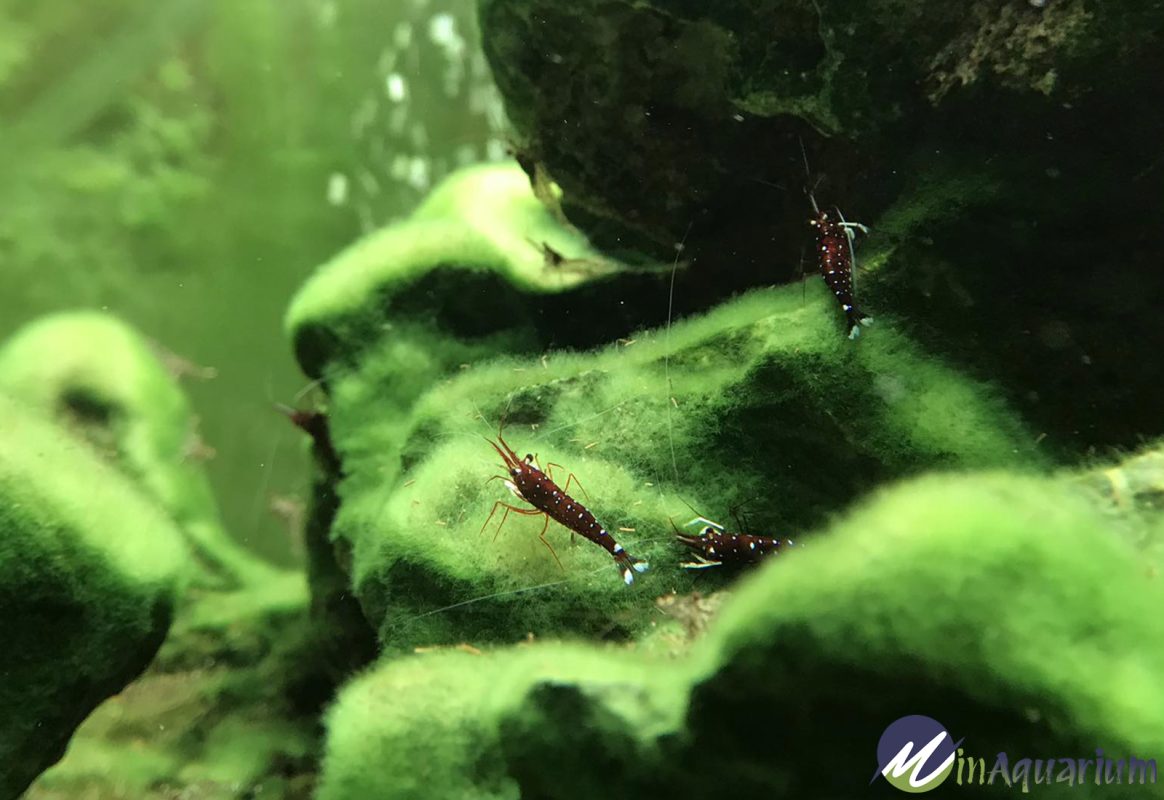Blogs
Sulawesi White Sock Shrimp | A Comprehensive Guide for Aquarium Enthusiasts
Embrace the captivating beauty and unique characteristics of the Sulawesi White Sock Shrimp, a prized possession among dedicated aquarium enthusiasts. Renowned for their vibrant coloration and intriguing behaviors, these captivating crustaceans add a splash of charm and vitality to any aquatic ecosystem. Dive into this comprehensive article to unlock the secrets of caring for and breeding this exceptional species, enriching your aquarium experience like never before.
Physical Characteristics
A Visual Feast of Hues and Patterns
- Radiate in the brilliance of their vivid red shells, adorned with an array of white and bluish spots that resemble celestial constellations.
- Admire the distinct white front legs, reminiscent of white socks, that give these shrimp their charming nickname.
- Marvel at their fluid movements, as the white legs create an alluring “marching” effect that captivates the eye.

Habitat and Water Parameters
Creating an Ideal Aquatic Haven
- pH Balance: 7.5 – 8.5, ensuring optimal conditions for their sensitive physiology.
- Total Dissolved Solids (TDS): 90-110 (using RODI water) for maintaining essential mineral balance.
- General Hardness (gH): 3-5, replicating their natural habitat’s low hardness levels.
- Water Clarity: Pristine waters free of contaminants and debris promote their health and well-being.
Diet and Feeding
Nurturing the Sulawesi White Sock Shrimp
- Powder Food: A nutritious supplement rich in essential vitamins and minerals, supporting growth and breeding.
- Avoid Overfeeding: Prevent nitrate buildup and maintain water quality by feeding sparingly.
- Targeted Feeding: Ensure all shrimp have access to food by distributing small amounts throughout the tank.
Breeding Basics
Prolific Propagators with Captivating Young
- Fecundity: Female Sulawesi White Sock Shrimp carry approximately 12-16 eggs at a time.
- Incubation Period: Eggs hatch within approximately 20 days, heralding a new generation of shrimplets.
- Continuous Breeding: Once the breeding cycle commences, it can continue prolifically with subsequent broods.
Aquarium Setup Essentials
Providing a Sanctuary for Thriving and Reproduction
- Substrate: Opt for inert substrates such as sand or gravel, mimicking their natural environment.
- Filtration System: Utilize a sponge filter to gently circulate the water and remove impurities.
- Heating Element: Maintain a stable water temperature between 27-29°C, mimicking their tropical origins.
- Hardscape: Include rocks and driftwood to provide shelter, recreate their habitat, and stimulate natural behavior.
- Flora: Introduce live plants (optional) for additional aesthetics, oxygen production, and algae control.
Tank Compatibility
Ensuring Cohabitation Harmony
- Peaceful Nature: Sulawesi White Sock Shrimp are inherently peaceful and pose no threat to other peaceful tank inhabitants.
- Dedicated Tank Preferred: To reduce stress and enhance breeding success, establish a dedicated shrimp tank free from fish or potential predators.
- Mixing Species: If mixing with other shrimp species, choose complementary species with similar water parameter preferences and temperaments.
Health and Troubleshooting
Maintaining Pristine Water Conditions for Shrimp Vitality
- Regular Monitoring: Monitor water parameters closely to ensure they remain within the optimal range for Sulawesi White Sock Shrimp health.
- Water Changes: Perform partial water changes (20-25%) regularly to remove excess nutrients and contaminants.
- Gravel Cleaning: Regularly vacuum the substrate to prevent organic waste accumulation and maintain water clarity.
- Avoid Medication: Avoid using medications in the shrimp tank, as they may be harmful to sensitive shrimp.
Troubleshooting
Resolving Common Challenges
- Shell Loss: Investigate water parameters and adjust them as necessary. Ensure adequate calcium and magnesium levels for shell development.
- Disease: If disease is suspected, promptly isolate the affected shrimp and consult a veterinarian or experienced shrimp keeper.
- Molting Issues: Provide ample shelter for hiding during the molting process. Ensure proper calcium levels in the water to support molting.
FAQs:
- What is the average lifespan of a Sulawesi White Sock Shrimp? Typically, they live for 2-3 years with proper care and maintenance.
- Can I breed Sulawesi White Sock Shrimp in a community tank? While it’s possible, a dedicated shrimp tank is preferred to maximize breeding success and minimize stress.
- How often should I feed Sulawesi White Sock Shrimp? Feed them sparingly once or twice daily, providing enough food for them to consume within a few minutes.
- Are Sulawesi White Sock Shrimp suitable for beginners? They are relatively low-maintenance shrimp, but their specific water parameter requirements make them better suited for experienced shrimp keepers.
- How can I differentiate male and female Sulawesi White Sock Shrimp? Female shrimp are typically larger and more rounded, with a more robust saddle-like structure on the back of their abdomen compared to males.
Conclusion: Delve into the captivating world of Sulawesi White Sock Shrimp, where vibrant colors and intriguing behaviors intertwine. With a deep understanding of their water requirements, feeding preferences, breeding habits, and habitat needs, aquarium enthusiasts can embark on a journey to provide an optimal environment for these fascinating crustaceans to thrive and captivate. Embrace their unique charm, delve into the mysteries of their life cycle, and relish the aesthetic splendor they bring to your aquatic realm. As you embark on the Sulawesi White Sock Shrimp adventure, may you uncover new wonders, foster their well-being, within specified ranges.
- Provide a serene aquarium with inert substrate, sponge filter, and heating.
- Feed specialized powder food, supplemented with microorganisms.
- Sulawesi White Sock shrimp are generally easy to breed with high fecundity.
- Common health issues include bacterial and parasitic infections, with quarantine and early detection crucial.
- Proper care, monitoring, and attention to detail ensure healthy and prolific Sulawesi White Sock shrimp colonies.

